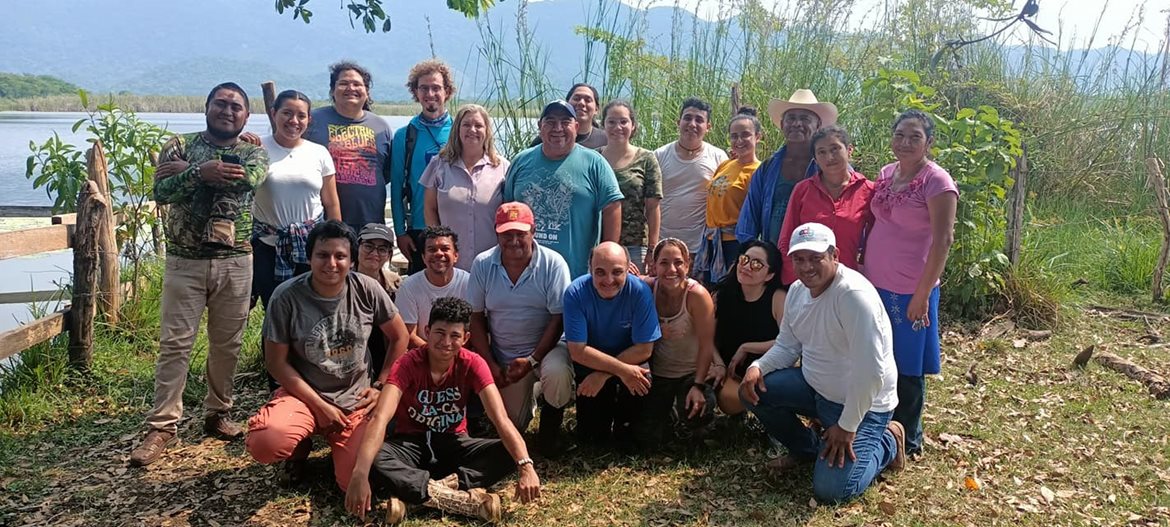
Nelson Mandela University’s Professor Janine Adams (back row, fifth from left) and Dr Gavin Rishworth (back row, fourth from left) visited a team of researchers and students from the Universidad Juárez Autónoma de Tabasco (UJAT), Mexico led by Dr Carlos Burelo-Ramos (back row, sixth from left) at the Rio San Pedro Martir where the world’s most inland mangroves occur.
This area has been isolated from the ocean for the past 120,000 years. A team of scientists and students, led by Dr Carlos Burelo-Ramos (Universidad Juárez Autónoma de Tabasco – UJAT, Villahermosa, Mexico) have been uncovering some of the secrets of this special place and approached researchers from the Nelson Mandela University last year for collaboration on this project.
Professor Janine Adams (SARChI Chair: Shallow Water Ecosystems and Distinguished Professor, Department of Botany) and Dr Gavin Rishworth (Senior Lecturer, Department of Zoology) were invited by Dr Burelo to visit his team of researchers in Mexico during May 2022 to explore the mangroves and also unusual tufa structures in the river.
Mangroves are unique trees that grow at the water’s edge of coastlines in the tropics and sub-tropics where their deep roots stabilise sediments, provide protection from storm surges and sea-level rise, and store carbon below ground. This provides effective climate change mitigation. Professor Adams, who is also the co-chair of the Western Indian Ocean Mangrove Network, conducts leading research on mangrove habitats in South Africa and is internationally recognised for her expertise on these unique plants.
The inland red mangroves (Rhizophora mangle) in Mexico provide a glimpse into a relict habitat where beautiful orchids, bromeliads and cacti thrive with coastal plants amongst the trees’ branches in this humid environment. This patch of mangroves, being so isolated from the ocean, offers a glimpse into past conditions of sea-level change which is relevant in today’s climate change reality. The region is a biodiversity hotspot and important for local tourism. Prof Adams, as an expert on socio-ecological frameworks of mangrove ecosystems, is working with Dr Burelo on future resilience strategies and local pressures relevant to this extraordinary mangrove habitat.
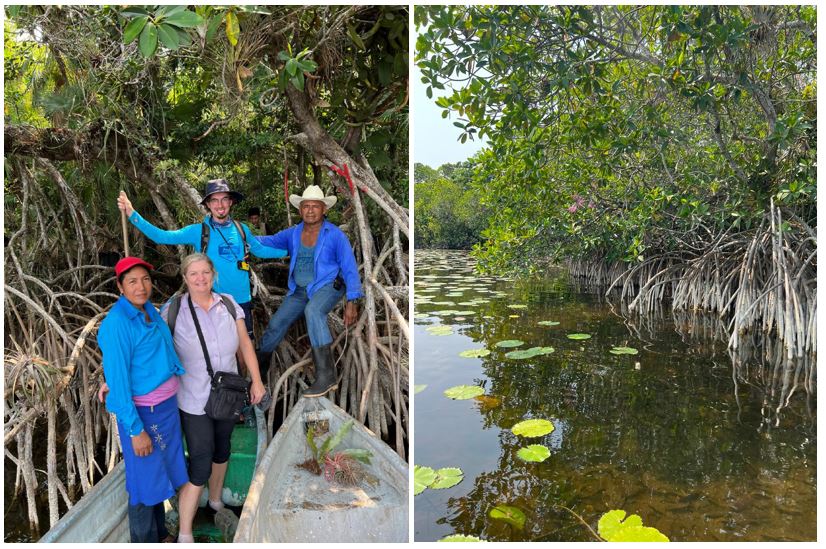
Nelson Mandela University researchers with local residents of the San Pedro Mártir River, Mexico (left) within the beautiful mangroves of this isolated inland lake (right).
Also of remarkable interest to the region, and the initial reason that Dr Burelo made contact with the team at Nelson Mandela University, is that a network of natural bridges span the San Pedro River, these being formed by tufa carbonate (a chalk-like substance) that precipitates out of the water. The tufa of the San Pedro River was once used by the ancient Mayans as foot bridges while crossing the river. Dr Rishworth conducts research in South Africa and internationally on similar tufa structures, but particularly those built by microorganisms to form microbialites or stromatolites. He leads the Supratidal Spring-Fed Living Microbialite Ecosystems (SSLiME) project in South Africa, based at Nelson Mandela University. In Mexico, Dr Rishworth aimed to uncover whether the tufa in the river was being built by microorganisms like cyanobacteria or whether it was forming inorganically.
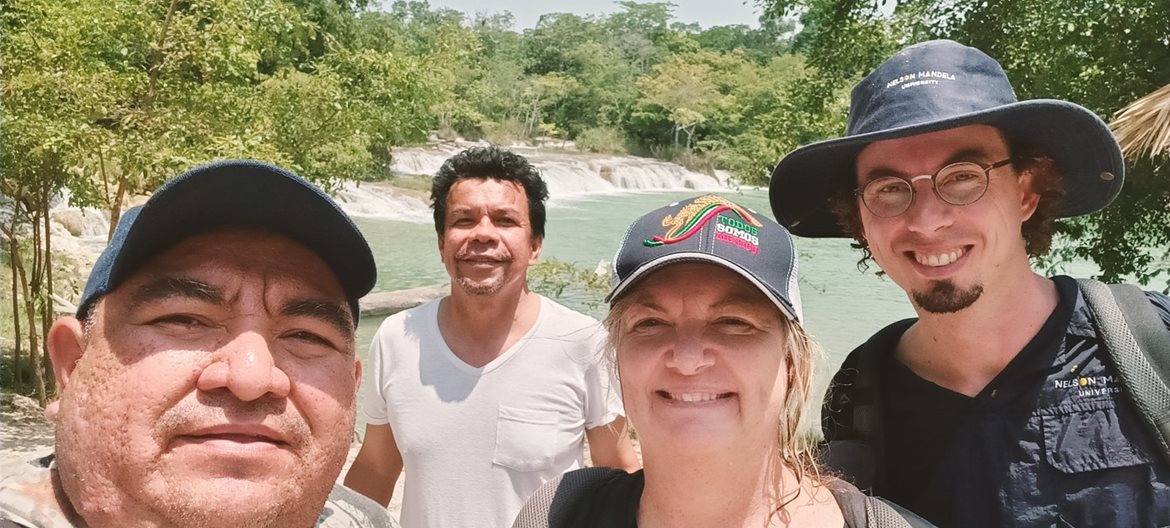
Dr Carlos Burelo (UJAT, Mexico - left), Prof Janine Adams and Dr Gavin Rishworth (Nelson Mandela University – centre right and far right) with the Cascades de Reforma tufa waterfalls in the background on the San Pedro River, Mexico.
Microbialites are important in Earth’s history as they extend in the fossil record as far back as at least 3.5 billion years ago and the cyanobacteria within them contributed to important events such as oxygenating the atmosphere. Modern, living examples are rare but provide a glimpse into what Life’s early conditions might have been. As in unique places like South Africa where modern microbialites form, the tufa of the San Pedro River in Mexico adds a new chapter to revealing some of our Earth’s earliest history. In collaboration with the team at UJAT, Mexico, Dr Rishworth and his SSLiME collaborators are analysing the tufa microbialites and will soon be publishing these results with Dr Burelo.
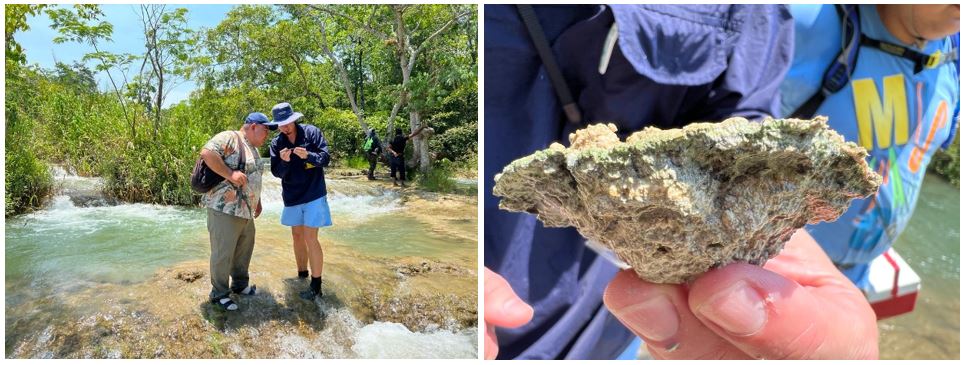
Dr Burelo (UJAT, Mexico) and Dr Rishworth (Nelson Mandela University) on the tufa waterfalls of the San Pedro River (left) examining what appears to be active microbialites (right) – a glimpse into Life’s early past.
This was an exciting example of scientific collaboration across borders that will result in several future opportunities for all involved. The region is unique as a glimpse into different parts of Life’s history: Mayan culture, relict ocean mangroves, and tufa microbialites. In the background of this biodiversity, what especially stood out to Prof Adams and Dr Rishworth was the enthusiasm and dedication shown by the students that they interacted with from UJAT, Mexico. The passion of this team led by Dr Burelo was infectious and its effects revealed inspired students who are emerging as experts in their respective disciplines. This collaboration showed the benefits of multidisciplinary networking that strengthens science, and in the midst of excellent Mexican food and hospitality, was a recipe for only good things.
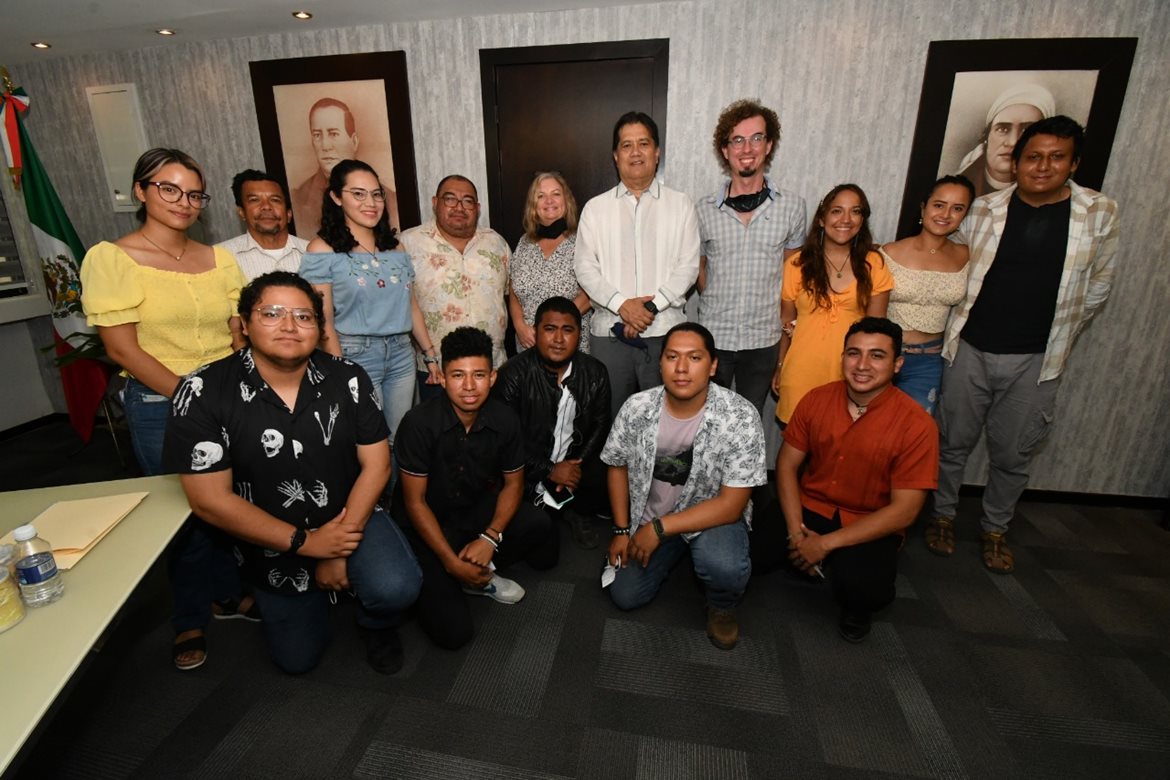
Nelson Mandela University researchers Prof Janine Adams (back row, fifth from left) and Dr Gavin Rishworth (back row, fourth from right) are welcomed by Rector Guillermo Narváez Osorio (back row, centre) of the Universidad Juárez Autónoma de Tabasco (UJAT) in Mexico during their visit with Dr Carlos Burelo (back row, fourth from left) and his research and student team.